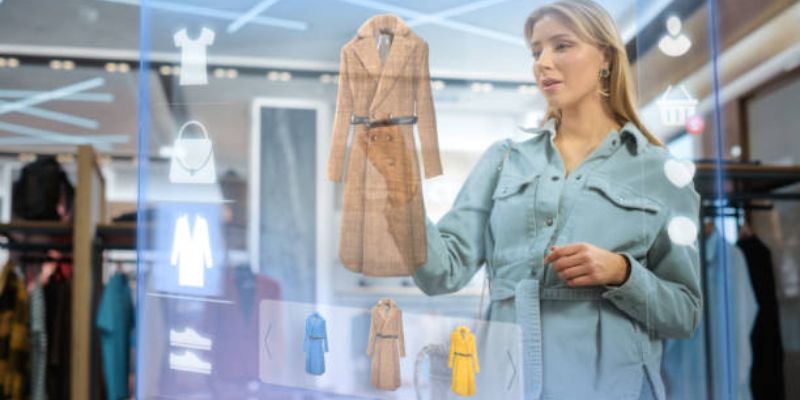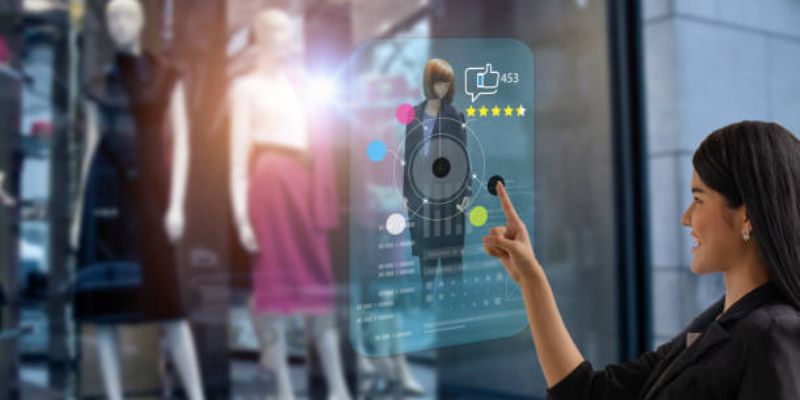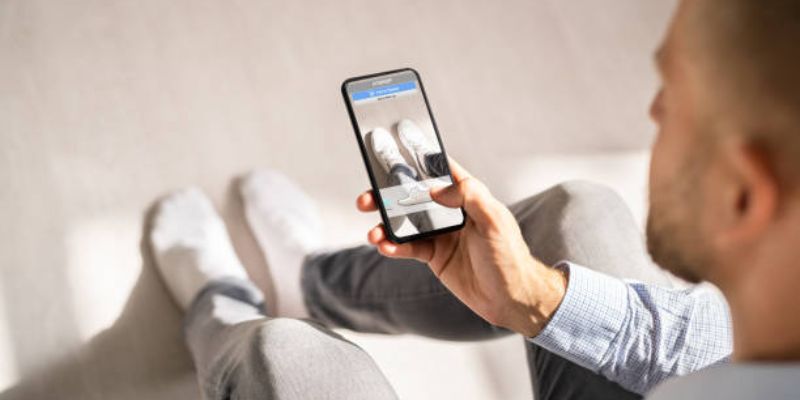How Augmented Reality Is Used In Retail Tech
Let me tell you a story. A few months ago, I stood in my living room, holding my phone in an empty corner. A sleek navy blue sofa appeared on the screen, perfectly scaled to fit the space. I could walk around it, change the fabric colour, and even see how it looked under different lighting—all without leaving my house. This isn't science fiction. It's Augmented reality (AR) reshaping how we shop. Retailers use this tech to create magical, personalized experiences that blend the digital and physical worlds. Let's dive into how AR is changing the game.
Let me tell you a story. A few months ago, I stood in my living room, holding my phone in an empty corner. A sleek navy blue sofa appeared on the screen, perfectly scaled to fit the space. I could walk around it, change the fabric colour, and even see how it looked under different lighting—all without leaving my house. This isn't science fiction. It's Augmented reality (AR) reshaping how we shop. Retailers use this tech to create magical, personalized experiences that blend the digital and physical worlds. Let's dive into how AR is changing the game.
Virtual Try-Ons: Because Seeing Is Believing
Imagine buying makeup without swatching 20 shades on your hand or picking glasses that suit your face shape. AR makes this possible. Brands like Sephora and Warby Parker let you use your phone camera to "try on" products virtually. You hold up your device, and the app overlays lipstick, eyeshadow, or frames onto your face in real-time. It's like having a mirror that lets you play dress-up with zero mess.

But it's not just about looks. Furniture retailers like IKEA use AR to place 3D models of sofas, shelves, or lamps in your home. You can see if that coffee table fits your space or if the colour clashes with your walls. No more guessing games. This tech reduces the Stress of online shopping because you know what you’re getting. And when customers feel confident, they’re more likely to hit “buy.”
In-Store Magic: AR Makes Shopping an Adventure
Walk into a store today, and you might find AR mirrors that do more than show your reflection. These smart displays can suggest outfits, show product details, or even turn shopping into a game. For example, a cosmetics counter might use AR to simulate how a skincare routine would look after two weeks. Shoppers aren't just buying a moisturizer—they're visualizing the results.
Stores also use AR to guide customers. Lost in a giant supermarket? Point your phone at a sign, and arrows on your screen lead you to the cereal aisle. Or scan a product to see reviews, ingredients, or pairing suggestions. It's like having a personal shopping assistant in your pocket.
Online Shopping Gets a Makeover
For years, online shopping meant scrolling through flat images and hoping for a dress fit. AR changes that. Now, you can see how a dress moves when you twirl or how those sneakers look with your favourite jeans. Apps let you upload a photo of yourself to create a virtual avatar that "wears" clothes. It's not perfect—sometimes the lighting looks off—but it's way better than guessing.
Even grocery shopping is getting an upgrade. Imagine holding your phone over a cereal box to see a 3D animation of the mascot dancing or scanning a wine label to watch a vineyard tour. These little touches make shopping feel fun, not like a chore.

Marketing That Feels Like Play
Retailers love AR because it grabs attention. Picture this: A billboard for a new perfume comes to life when you point your phone at it. A virtual model appears, spritzing the Scent, and you can "smell" it through your screen (okay, maybe not yet). Or a toy company lets kids “unwrap” a digital gift box at a bus stop, revealing a character that jumps into their hands.
These campaigns aren't just flashy—they're memorable. Customers who interact with a brand through AR are more likely to remember it, and sharing the experience on social media is free advertising.
Why Retailers Are Betting Big on AR
So, why are companies investing millions in AR? Simple: it works. Shoppers who use AR are more likely to buy something and less likely to return it. If you’ve already “tried on” those shoes in AR, you know they fit your style. That means fewer boxes sent back, saving retailers money.
Stores also collect data from AR interactions. Which products do people try most? How long do they spend looking at different options? This info helps brands improve their offerings and personalize recommendations.
The Future is Blurred (In a Good Way)
AR in retail is still growing. Soon, we might see "smart mirrors" that suggest outfits based on the weather or your calendar. Or AR contact lenses that overlay prices and reviews as you browse a store. Even virtual fitting rooms where you can "try" clothes from multiple brands simultaneously.
But the real win? AR bridges the gap between online and in-person shopping. You get the convenience of digital with the tangibility of a store. It's not about replacing physical retail but about improving it.

Why You Should Care About AR Shopping
AR isn't just for tech geeks. It's for anyone who bought a couch that didn't fit, returned a dress that looked nothing like the photo, or wasted time hunting for product details. This tech saves time, reduces frustration, and makes shopping feel like an adventure. Look for that little AR icon the next time you browse online or walk through a store. Click it. Play around. You might be surprised at how fun shopping can be.
The Future of Retail is Here
Augmented reality isn't the future—it's happening now. From virtual try-ons to interactive ads, retailers use AR to create faster, more innovative, and more personal experiences. As the tech improves, the line between shopping online and in-store will blur even more. So keep your phone handy. You might step into a whole new world the next time you shop.